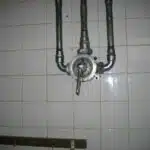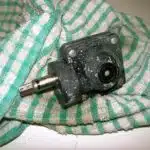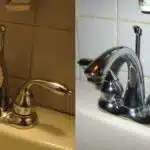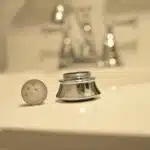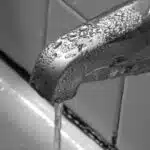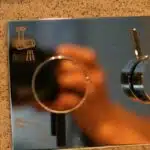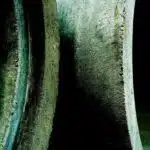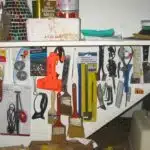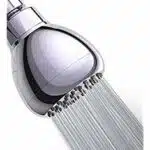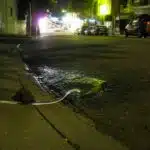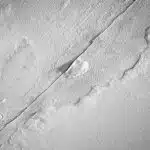As a plumbing expert, I have encountered numerous issues with Moen faucets that require the use of a cartridge puller. The Moen faucet cartridge puller is an essential tool for any plumber or DIY enthusiast who wishes to remove the cartridge from a Moen faucet without causing damage. In this article, we will discuss how to use a Moen faucet cartridge puller correctly.
Before we begin, it is worth noting that using a Moen faucet cartridge puller requires some expertise and practice. If you are not confident in your abilities, it is best to call in an expert plumber who can handle the task safely and efficiently. However, if you are determined to tackle the problem yourself, read on as we guide you through the process of using a Moen faucet cartridge puller.
Understanding Moen Faucet Cartridge Pullers
Moen faucet cartridge pullers are essential tools for homeowners and plumbers alike, providing an efficient way to remove old cartridges from Moen faucets. These devices offer several benefits, including the ability to remove stubborn cartridges without damaging the surrounding plumbing fixtures or causing leaks. They also save time and effort compared to traditional methods of cartridge removal, such as using pliers or wrenches.
While there are alternatives to using a Moen faucet cartridge puller, they are often less effective and can cause damage to the faucet or surrounding fixtures. For example, attempting to remove a cartridge with pliers can result in broken parts or stripped threads, which may require costly repairs. Using a wrench may also cause damage if the tool slips or is applied with too much force.
Before using a Moen faucet cartridge puller, it is important to take certain safety precautions. This includes turning off the water supply to the faucet and releasing any residual pressure by opening the faucet handles. It is also recommended that users wear protective gloves and eyewear in case of accidental slips or splashing water. By following these guidelines, users can safely and effectively use their Moen faucet cartridge puller for years to come.
Safety Precautions Before Using The Tool
Did you know that more than 70% of plumbing accidents happen due to the lack of safety precautions? This means that many individuals take their own safety for granted. As professional plumbers, we understand the importance of taking safety seriously, especially when handling tools such as a Moen faucet cartridge puller.
To ensure your safety while using this tool, it is important to wear proper safety gear such as gloves and eye protection. These items will help protect your hands from sharp edges and prevent debris from entering your eyes. Additionally, avoid wearing loose clothing or jewelry that could get caught in the tool or cause distractions.
Common accidents associated with using a Moen faucet cartridge puller include hand injuries, cuts, and bruises. To reduce these risks, follow these five tips:
- Familiarize yourself with the tool before use.
- Always use the correct size of cartridge puller for the job.
- Ensure that the water supply is turned off before starting work.
- Use both hands to operate the tool and maintain a firm grip.
- Keep children and pets away from your workspace.
By following these precautions, you can minimize risk while using a Moen faucet cartridge puller. Next up, let’s discuss how to identify the type of Moen cartridge you have in order to select the appropriate replacement part.
Identifying The Type Of Moen Cartridge
After ensuring your safety, the next step in using a Moen faucet cartridge puller is to identify the type of Moen cartridge that needs replacement. This is important because different types of cartridges require different tools and methods for removal. Before starting any repairs, it is crucial to determine the correct cartridge type to avoid damaging the faucet and making the problem worse.
Moen cartridges come in various sizes and shapes, but the most common ones are the 1225 and 1200 series. The 1225 cartridge is used in single-handle faucets, while the 1200 cartridge is used in two-handle faucets. To identify which cartridge you need to replace, turn off your water supply and remove the handle from your faucet. Once you have access to the valve assembly, look for a small brass or plastic retaining clip that holds the cartridge in place. Remove this clip with pliers or a screwdriver and gently pull out the old cartridge.
However, identifying moen cartridge types can sometimes be tricky, especially if it’s an older model or if there are multiple brands installed in your home. If you’re unsure about which type of cartridge you need, consult with a plumbing expert who can help guide you through the process. Common issues that arise during replacement include broken retaining clips or corroded valves that prevent easy removal of cartridges. In these cases, it may be necessary to use specialized tools or even call in a professional plumber to assist with repairs.
Transition: Now that you have identified which type of Moen cartridge needs replacing and encountered any potential issues along the way, it’s time to prepare your faucet for cartridge removal.
Preparing The Faucet For Cartridge Removal
How do you prepare your faucet for cartridge removal? Before anything else, make sure to turn off the water supply in your home or building. Once you have done that, you can start removing obstacles that may hinder the process. These obstacles are often nuts and bolts that keep the faucet in place. You can use a wrench or pliers to loosen them up.
After removing the nuts and bolts, secure the faucet with a strap wrench or vise grip pliers. This will prevent unwanted movement while you work on the cartridge puller. A stable faucet will also ensure that you won’t damage any of its parts during the extraction process.
Remember these three things when preparing your faucet for cartridge removal:
- Turn off your water supply before starting any plumbing work.
- Remove all obstacles such as nuts and bolts before securing your faucet.
- Secure your faucet with a strap wrench or vise grip pliers to prevent movement.
Next up, we’ll discuss how to assemble the Moen Faucet Cartridge Puller so that it is fully functional in extracting cartridges from faucets.
Assembling The Moen Faucet Cartridge Puller
After preparing your faucet for cartridge removal, you will need a Moen Faucet Cartridge Puller to proceed. This tool is specially designed to remove Moen cartridges from their fixtures without causing any damage. The puller is made up of three components: the main body, the center post, and the locking nut.
Tools needed for this task are a flat-head screwdriver, pliers, and the Moen Faucet Cartridge Puller. Begin by screwing the locking nut onto the center post until it is snugly in place. Next, insert the center post through the top of the cartridge puller’s main body and push it down until it snaps into place.
With the puller assembled, position it over your faucet cartridge and tighten the locking nut until it is securely in place. Then use pliers to turn the center post clockwise while holding onto the main body with your other hand. Continue turning until you feel resistance or hear a click. This indicates that your puller has successfully gripped onto your cartridge. Now that you have adjusted your puller for optimal grip, you can proceed with removing your Moen faucet cartridge.
Adjusting The Puller For Optimal Grip
To get a perfect grip on the cartridge, it is essential to adjust the tension of the puller. A well-adjusted puller allows for maximum pressure and grip on the cartridge, resulting in a smooth and effortless extraction. Adjusting tension can be done by turning the center screw of the puller clockwise or counterclockwise. By doing so, you can create more or less tension depending on how tight or loose you want your grip to be.
Alternative grip methods may also be used when adjusting the puller’s tension. If you are having trouble getting a good grip on the cartridge with just the puller, try using pliers to hold onto the arms of the puller. This method provides additional leverage and can help increase tension without having to overtighten the screw in the center.
If you still find that your puller is not providing enough grip, consider using lubrication such as WD-40 or silicone spray on both sides of the cartridge before attempting removal. The added lubrication can help reduce friction between metal components and make it easier for your pulling tool to grab hold.
With these tips in mind, adjusting your Moen faucet cartridge puller for optimal grip should be a breeze! In no time at all, you’ll have successfully removed your old cartridge and will be ready to move onto removing the retaining clip or nut – but more about that later.
Removing The Retaining Clip Or Nut
To remove the retaining clip or nut on a Moen faucet cartridge, you’ll need to have some basic tools at your disposal. Using either pliers or a wrench, carefully grip the clip or nut and turn it counterclockwise until it is fully removed from the cartridge. It’s essential to use caution when doing this as too much force could damage the clip or nut, making it difficult to remove.
When using pliers or a wrench to remove the retaining clip or nut, it’s important to take precautions against any potential damage. This includes ensuring that your tools are in good condition and not worn down. Additionally, you should avoid applying too much pressure as this can cause the clip or nut to strip. By taking these precautions, you can safely remove the retaining clip or nut without causing any further damage to your faucet.
With the retaining clip or nut successfully removed from your Moen faucet cartridge, you’re now ready to move onto inserting the puller into the cartridge. Before doing so, however, be sure to set aside any small parts that were previously attached to the cartridge such as O-rings or washers. These can easily be lost during this step if not properly secured.
Inserting The Puller Into The Cartridge
To insert the Moen faucet cartridge puller into the cartridge, proper alignment is critical. First, ensure that the prongs of the puller are facing upwards and that they align with the notches on the top of the cartridge. Gently push down on the puller until it clicks into place. If there is any resistance while inserting the puller, stop and readjust its position to avoid damaging the cartridge.
Once you have properly aligned the puller, you can begin applying pressure to remove the cartridge. The next step involves using adjustable pliers to grip onto the top of the puller and twisting it counterclockwise. This will apply downward force on both sides of your cartridge, dislodging it from its housing. Apply pressure gradually and evenly to avoid damaging any components or breaking off parts of your faucet.
After you have successfully removed your faucet cartridge with a Moen faucet cartridge puller, you can proceed with tightening it to remove any remaining pieces or debris in your plumbing system. However, before proceeding with this step, make sure to inspect both your faucet’s housing and your new replacement cartridge for any signs of wear or damage. In case you notice anything out of place or broken, contact a professional plumber for assistance with repairing or replacing your faucet system.
Tightening The Puller To Remove The Cartridge
Once the puller has been inserted into the cartridge, it is important to tighten it properly. This will ensure that the cartridge is removed with ease and without any damage to the faucet itself. Adjusting tension is crucial, as too little pressure won’t work and too much pressure could cause damage to the faucet.
To tighten the puller, slowly turn the center screw clockwise until you feel resistance. At this point, stop tightening and use a wrench or pliers to apply additional pressure until you hear a popping sound. This sound indicates that the cartridge has been successfully loosened from its housing.
It’s important to note that if you encounter any resistance while removing the cartridge, do not force it out. Instead, adjust the tension on your puller by turning it counterclockwise slightly before continuing. With proper tension and patience, removing your Moen faucet cartridge should be a breeze.
Using lubrication to ease cartridge removal can be a helpful step in this process. By applying a small amount of silicone lubricant around the edges of the cartridge before inserting your puller, you can help reduce friction and make for an easier removal process. However, be sure not to overdo it with lubricant as too much can actually make things worse by causing slippage or making cleanup more difficult later on.
Using Lubrication To Ease Cartridge Removal
- Before using a cartridge puller, it is important to lubricate the faucet in order to reduce friction and make cartridge removal easier.
- The recommended lubricant to use when removing a faucet cartridge is petroleum jelly, as it will provide a protective film that will make cartridge removal smoother.
- To apply the lubricant, it is important to evenly spread it around the base of the faucet, ensuring that both sides of the cartridge are covered.
- Once the lubricant has been applied, it is useful to use a screwdriver to further loosen the cartridge.
- Once the cartridge is sufficiently loose, a Moen faucet cartridge puller can be used to remove the cartridge.
- To ensure the cartridge is removed correctly, it is important to pull the cartridge straight up without twisting or jerking.
Lubricating The Faucet
As a plumbing expert, one of the most common problems encountered in faucet removal is a stuck cartridge. While using a Moen faucet cartridge puller can help ease the process, lubricating the faucet beforehand is also highly recommended. Applying lubrication to the faucet is a simple and effective way to make cartridge removal much easier.
The benefits of lubricating the faucet are numerous. First and foremost, it helps loosen any mineral buildup or corrosion that may have formed over time. This means that when you use the Moen faucet cartridge puller, there will be less resistance and force required to remove the cartridge. Furthermore, lubrication can also help prevent damage to the surrounding hardware and plumbing by reducing friction during removal.
To apply lubrication to your faucet, start by turning off your water supply and removing any handles or decorative caps from your faucet. Next, apply a liberal amount of lubricant directly onto the cartridge and surrounding areas. Be sure to use a high-quality silicone-based lubricant for best results. Allow the lubricant to sit for a few minutes before attempting to remove the cartridge with your Moen faucet cartridge puller.
In conclusion, applying lubrication prior to using a Moen faucet cartridge puller can greatly ease the process of removing a stuck cartridge. The benefits include loosening mineral buildup and corrosion as well as reducing friction during removal which can prevent damage to surrounding hardware and plumbing. With these simple steps, you can make your next faucet removal project much smoother and more efficient.
Applying The Lubricant
When removing a stuck cartridge from a faucet, it is essential to apply lubrication before using a Moen faucet cartridge puller. Applying lubricant helps loosen any mineral buildup or corrosion that has accumulated over time, making it easier to remove the cartridge with less resistance and force. Moreover, lubrication can also prevent damage to the surrounding hardware and plumbing by reducing friction during removal.
To apply lubrication to your faucet, turn off the water supply first and then remove all handles and decorative caps from your faucet. Use a high-quality silicone-based lubricant for best results and apply it liberally onto the cartridge and surrounding areas. Allow the lubricant to sit for a few minutes before attempting to remove the cartridge with your Moen faucet cartridge puller.
After successfully removing the stuck cartridge, proper disposal of the old part is necessary. Contact your local recycling center or waste management facility for guidance on how to dispose of it properly. By practicing proper disposal methods, you can contribute to protecting the environment while ensuring safety in your home’s plumbing system.
Removing The Cartridge
To successfully remove a stuck cartridge from a faucet, the use of lubrication is highly recommended. This technique aims to loosen any mineral buildup or corrosion that could have accumulated over time, making it easier to remove the cartridge with less force and resistance. However, lubrication is not the only method for removing a stuck cartridge. Other alternatives include using pliers or needle-nose pliers to pull out the cartridge carefully.
While applying lubricant can be an effective way to ease cartridge removal, it is crucial to prevent damage to the cartridge during the process. The use of excessive force or pulling at an angle may cause the cartridge’s plastic parts to break or crack, rendering it unusable. To avoid this scenario, using a Moen faucet cartridge puller is advisable as it provides equal pressure on all sides of the cartridge, helping dislodge it without damaging its components.
In summary, using lubrication in combination with proper tools like Moen faucet cartridge pullers can make removing a stuck cartridge more accessible and smoother. While there are alternative methods available for removing cartridges, these should be done with caution to prevent damaging them. By following these guidelines and practicing safety measures when dealing with plumbing fixtures, homeowners can ensure their plumbing systems remain in good working condition for years to come.
Removing The Cartridge From The Faucet Body
After successfully removing the retaining clip, it is time to remove the cartridge from the faucet body. There are several cartridge removal techniques that can be used depending on the type of faucet and the condition of the cartridge. One common technique is to use pliers or a wrench to gently twist and pull out the cartridge. Another technique is to use a specialized tool such as a Moen faucet cartridge puller, which can make removing stubborn cartridges easier.
It is important to note that common cartridge issues such as corrosion, mineral buildup, or damage may require extra care when removing. In cases where the cartridge seems stuck or difficult to remove, it is recommended to apply lubricant or penetrating oil before attempting removal again. It is also important to avoid using excessive force as this can cause damage to both the faucet body and cartridge.
Once successfully removed, inspecting and cleaning the cartridge should be done before installing a new one. This includes checking for any cracks, worn out seals, or debris buildup that may affect its performance in the long run. In addition, cleaning with soap and water or vinegar solution can help remove any mineral buildup that may have caused issues with water flow or temperature control.
Transitioning into Cleaning and Inspecting Cartridge:
Now that you have successfully removed your Moen faucet cartridge using proper techniques for your specific situation, it’s time to move onto cleaning and inspecting it for potential issues.
Cleaning And Inspecting The Cartridge
- To remove the cartridge from the faucet, a Moen cartridge puller should be used.
- Before attempting to pull the cartridge, the water should be shut off to the faucet.
- The cartridge should be cleaned with a light detergent and warm water to remove any debris that may have built up.
- The cartridge should then be inspected for any cracks or other signs of damage that may need to be addressed.
- If any issues are discovered, the cartridge should be replaced and the faucet should be reassembled.
- Finally, the water should be tested to ensure that the cartridge has been properly installed.
Removing The Cartridge
Removing the cartridge from your Moen faucet can be a daunting task, especially if you are not equipped with the right tools and knowledge. In this section, we will discuss some cartridge removal techniques that you can use to clean and inspect your cartridge. It is crucial to know how to remove the cartridge correctly as it can save you from future headaches.
One of the common cartridge issues is a stuck or corroded cartridge. To remove a stuck cartridge, you need to start by turning off the water supply to your faucet. Use a Moen faucet cartridge puller to remove the stuck cartridge by inserting it over the top of the valve stem and screwing it onto the threads. Once securely attached, pull up on the tool handle while simultaneously twisting it back and forth until the cartridge breaks loose.
Another common issue with cartridges is a leaking faucet. To fix this problem, you must first identify which side of your faucet is leaking. Once identified, turn off both hot and cold water supplies before removing the affected side’s handle. Next, use pliers or an adjustable wrench to loosen and remove the retaining nut that holds down the cartridge in place. Finally, use your Moen faucet cartridge puller to remove any worn out or damaged cartridges that may be causing leaks.
In conclusion, knowing how to remove your Moen faucet’s cartridges correctly is essential for proper cleaning and inspection of these vital components. Whether dealing with stuck or corroded cartridges or fixing leaky faucets caused by worn-out cartridges, having a Moen faucet cartridge puller makes these tasks more manageable for any DIY plumbing enthusiast. Remember always to turn off your water supply before attempting any removals or repairs on your faucet system.
Cleaning The Cartridge
After successfully removing the cartridge from your Moen faucet, it’s time to clean and inspect it thoroughly. Over time, cartridges can accumulate mineral deposits, debris, and other contaminants that affect their performance. Deep cleaning your cartridge is a necessary maintenance tip that ensures its longevity and proper functioning.
To deep clean your cartridge, start by soaking it in a solution of equal parts white vinegar and water for at least an hour. The vinegar helps dissolve any mineral buildup on the cartridge, making it easier to remove. After soaking, use a soft-bristled brush to gently scrub the cartridge’s surface, paying attention to the small crevices and grooves where dirt and grime tend to accumulate.
Once you have thoroughly cleaned the cartridge, rinse it with water and dry it with a clean cloth before reassembling your faucet. Regular deep cleaning of your Moen faucet cartridge helps prevent clogs and leaks caused by mineral buildup or debris accumulation. It also prolongs the life of your cartridge and ensures your faucet runs smoothly for longer periods before requiring any repairs or replacements.
Inspecting The Cartridge
After deep cleaning your Moen faucet cartridge, it is essential to inspect it thoroughly. Inspecting the cartridge involves identifying any problems that may be affecting its performance. This step helps you determine whether your cartridge needs replacing or if it can still function optimally with minor repairs.
To inspect the cartridge, start by examining its surface for any visible signs of wear and tear. Check for chips, cracks, or other damages that may affect its structure. Next, look at the rubber o-rings and gaskets to ensure they are intact and not worn out. If they are damaged or missing, replace them immediately to prevent leaks.
Additionally, check the inside of the cartridge for any mineral buildup or debris that may have accumulated in hard-to-reach areas. Use a flashlight to help you see clearly inside the cartridge. If you notice any blockages or clogs, use a soft-bristled brush to remove them gently. Regular inspection of your Moen faucet cartridge helps ensure that it functions optimally and prevents costly repairs down the line.
In conclusion, cleaning and inspecting your Moen faucet cartridge is an essential maintenance tip that ensures its longevity and proper functioning. Deep cleaning helps remove mineral buildup and debris accumulation while inspection helps identify potential problems affecting its performance. By incorporating these practices into your routine maintenance schedule, you can prolong the life of your cartridge and enjoy uninterrupted water flow from your faucet for longer periods.
Reassembling The Faucet With A New Cartridge
With the new cartridge installed, it is time to reassemble the faucet. The first step is to replace any O rings that were removed during the disassembly process. This will help ensure a tight fit and prevent leaks from occurring. Once any necessary O rings have been replaced, it is time to reinstall the faucet handle.
To reinstall the handle, simply slide it back onto the cartridge stem and tighten the set screw using an appropriate tool. Be sure not to overtighten, as this can cause damage to the handle or cartridge. Once the handle is securely in place, turn on the water supply and test for proper operation.
To complete the reassembly process, follow these five steps:
- Replace any removed O rings
- Reinstall faucet handle
- Turn on water supply
- Test for proper operation
- Check for leaks
As a plumbing expert, it is important to emphasize thoroughness in every step of this process. Taking shortcuts or overlooking details can lead to problems down the line. By following these steps carefully, you can ensure that your faucet will operate smoothly and without issue for years to come.
Moving forward, it’s essential to know how to troubleshoot common issues with cartridge removal should they arise.
Troubleshooting Common Issues With Cartridge Removal
Common cartridge issues can arise during the removal process, causing frustration and potential damage to your faucet. One of the most common issues is a stuck cartridge due to mineral buildup or corrosion. To troubleshoot this issue, try soaking the cartridge in white vinegar or a commercial mineral deposit remover for several hours before attempting to remove it with the puller. Another common issue is a broken or stripped stem that prevents the puller from gripping onto the cartridge. In this case, you may need to use a stem removal tool before using the puller.
Effective removal techniques are crucial for avoiding damage to your faucet and ensuring a successful replacement of the cartridge. When using the moen faucet cartridge puller, be sure to follow the manufacturer’s instructions carefully and apply steady, even pressure while turning. Avoid using excessive force or twisting at an angle, as this can cause permanent damage to your faucet. If you encounter resistance during the removal process, try applying heat with a hairdryer or heat gun to loosen any stubborn parts.
To avoid future issues with cartridge removal, it’s important to properly maintain and care for your faucet. Regular cleaning and maintenance can prevent mineral buildup and corrosion that can cause cartridges to become stuck. Additionally, always use caution when disassembling and reassembling your faucet components, as improper handling can lead to damage or leaks. By following these troubleshooting tips and effective removal techniques, you can successfully remove a moen faucet cartridge without causing damage or frustration.
Moving forward into conclusion and final thoughts on using a moen faucet cartridge puller…
Conclusion And Final Thoughts On Using A Moen Faucet Cartridge Puller
A Moen faucet cartridge puller is a valuable tool that can help you remove the cartridge from your Moen faucet without causing any damage. This tool makes the process of removing the cartridge much easier and less time-consuming than other methods. Using a Moen faucet cartridge puller is particularly helpful if you are experiencing leaking or low water pressure in your faucet.
If you are experiencing issues with your Moen faucet, it is important to consider whether you should hire a professional plumber or try to fix it yourself. While there are benefits to professional installation, such as ensuring that the job is done correctly and avoiding potential damage to your plumbing system, DIY maintenance tips can be effective for those who have experience working with faucets. If you decide to use a Moen faucet cartridge puller on your own, make sure that you follow the instructions carefully and take all necessary precautions.
In conclusion, using a Moen faucet cartridge puller can be an effective way to remove cartridges from Moen faucets without causing damage. Whether you decide to hire a professional plumber or attempt DIY maintenance, always remember to prioritize safety and follow best practices for plumbing repair. By taking the time to research and understand the process of using a Moen faucet cartridge puller, you can ensure that your plumbing remains in good condition for years to come.
Conclusion
Moen Faucet Cartridge Pullers are efficient and effective tools that make the process of removing and replacing cartridges in faucets much easier. Before using the tool, it is important to understand the safety precautions that should be taken, such as turning off the water supply and ensuring that all parts are clean and free of debris.
Identifying the type of Moen cartridge is also crucial, as different models require different methods for removal. Once you have identified the cartridge, you can prepare the faucet for removal by disassembling it and removing any remaining parts. You can then assemble the Moen Faucet Cartridge Puller and use it to remove the old cartridge.
It is essential to clean and inspect the cartridge before reassembling the faucet with a new one. Troubleshooting common issues with cartridge removal can also be helpful in avoiding potential problems during this process. Overall, understanding how to use a Moen Faucet Cartridge Puller properly can save time and money while ensuring that your faucet works correctly.
According to a recent survey conducted by Plumbing Manufacturers International (PMI), more than 70% of households in America have at least one leaky faucet. This statistic highlights how important it is to know how to properly maintain and repair your faucets, especially when it comes to replacing cartridges. With proper knowledge and tools like the Moen Faucet Cartridge Puller, homeowners can easily fix these leaks without needing professional help or spending too much money on replacement parts.
As a plumbing expert, I highly recommend that homeowners take advantage of tools like Moen Faucet Cartridge Pullers to maintain their faucets regularly and avoid costly repairs in the future. Understanding how to use these tools properly will not only save time but also ensure that your faucets work efficiently for years to come.
Image Credits
- “a river with trees and bushes around it” by Secret Travel Guide (featured)


